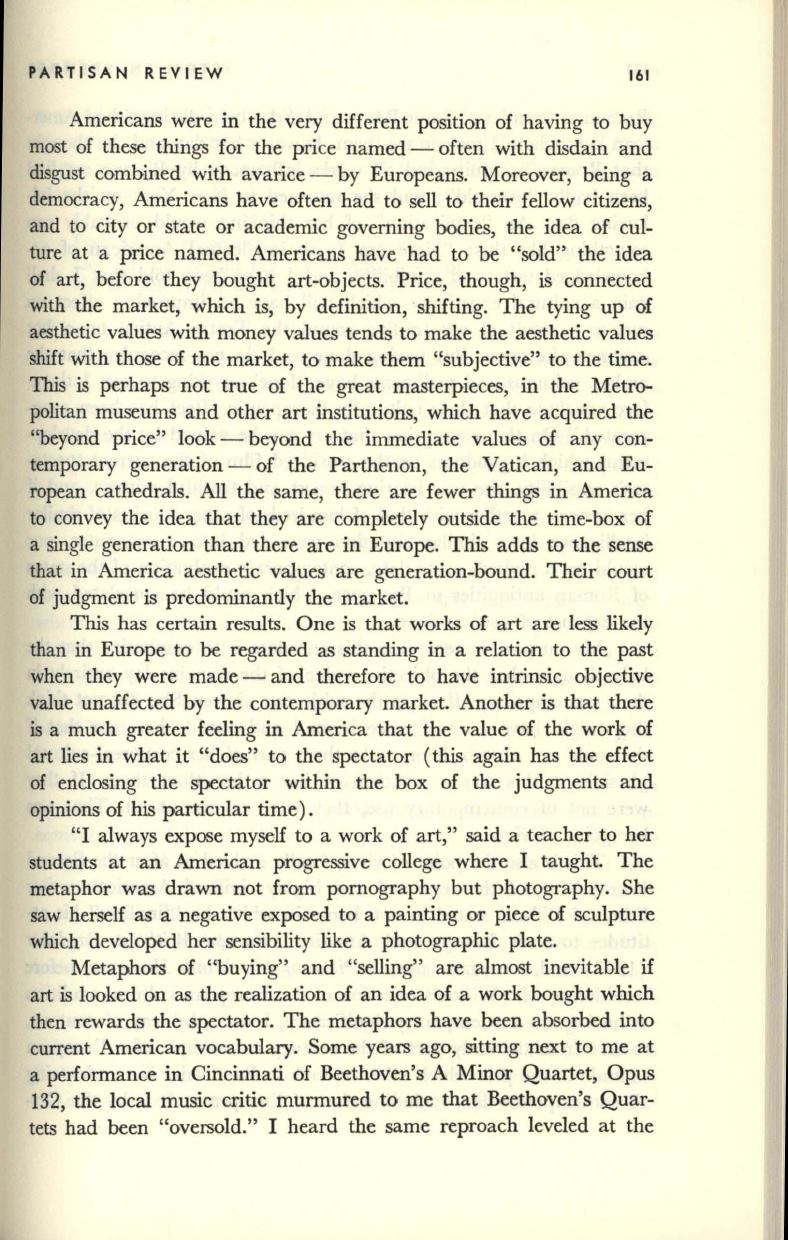
PARTISAN REVIEW
161
Americans were in the very different position of having to buy
most of these things for the price named - often with disdain and
disgust combined with avarice - by Europeans. Moreover, being a
democracy, Americans have often had to sell to their fellow citizens,
and to city or state or academic governing bodies, the idea of cul–
ture at a price named. Americans have had to be "sold" the idea
of art, before they bought art-objects. Price, though, is connected
with the market, which is, by definition, shifting. The tying up of
aesthetic values with money values tends to make the aesthetic values
shift with those of the market, to make them "subjective" to the time.
This is perhaps not true of the great masterpieces, in the Metro–
politan museums and other art institutions, which have acquired the
"beyond price" look - beyond the immediate values of any con–
temporary generation - of the Parthenon, the Vatican, and Eu–
ropean cathedrals. All the same, there are fewer things in America
to convey the idea that they are completely outside the time-box of
a single generation than there are in Europe. This adds to the sense
that in America aesthetic values are generation-bound. Their court
of judgment
is
predominantly the market.
This has certain results. One is that works of art are less likely
than in Europe to be regarded as standing in a relation to the past
when they were made - and therefore to have intrinsic objective
value unaffected by the contemporary market. Another is that there
is a much greater feeling in America that the value of the work of
art lies in what it "does" to the spectator (this again has the effect
of enclosing the spectator within the box of the judgments and
opinions of his particular time).
"I always expose myself to a work of art," said a teacher to her
students at an American progressive college where I taught. The
metaphor was drawn not from pornography but photography. She
saw herself as a negative exposed to a painting or piece of sculpture
which developed her sensibility like a photographic plate.
Metaphors of "buying" and "selling" are almost inevitable if
art is looked on as the realization of an idea of a work bought which
then rewards the spectator. The metaphors have been absorbed into
current American vocabulary. Some years ago, sitting next to me at
a performance in Cincinnati of Beethoven's A Minor Quartet, Opus
132, the local music critic murmured to me that Beethoven's Quar–
tets had been "oversold." I heard the same reproach leveled at the


